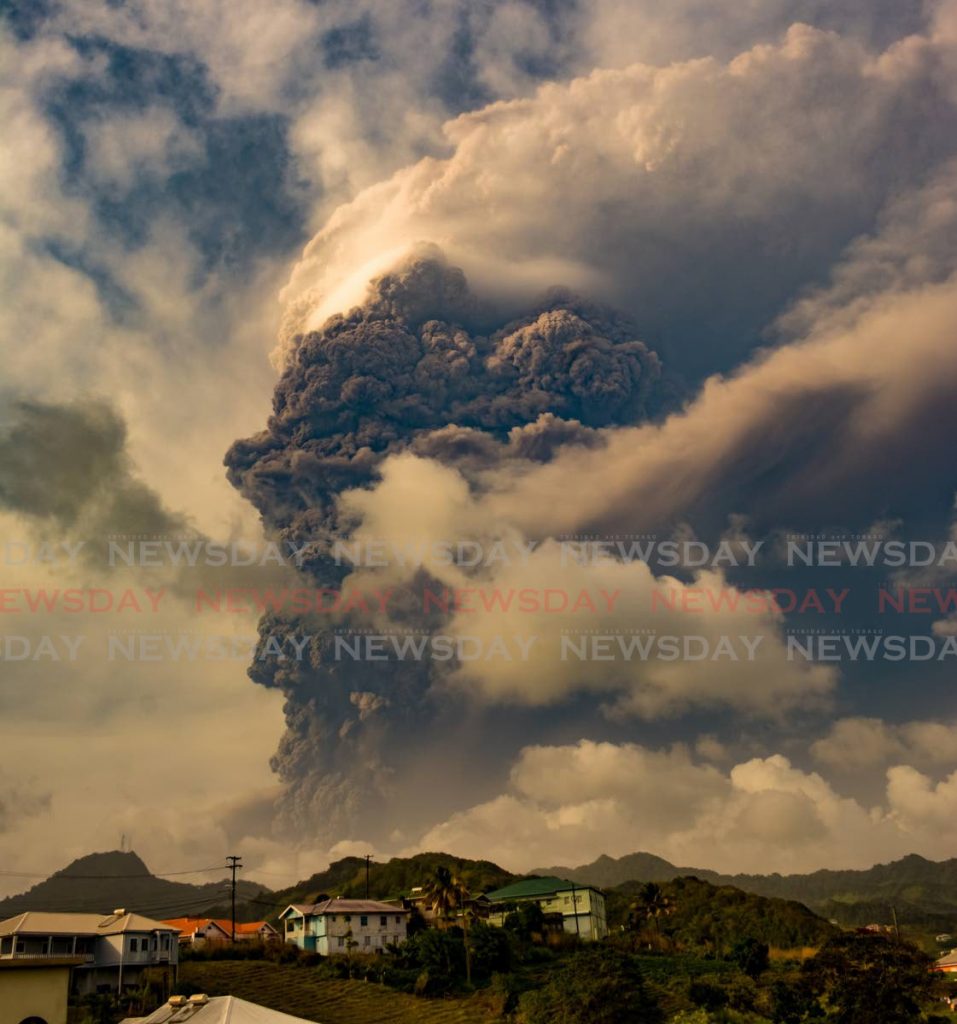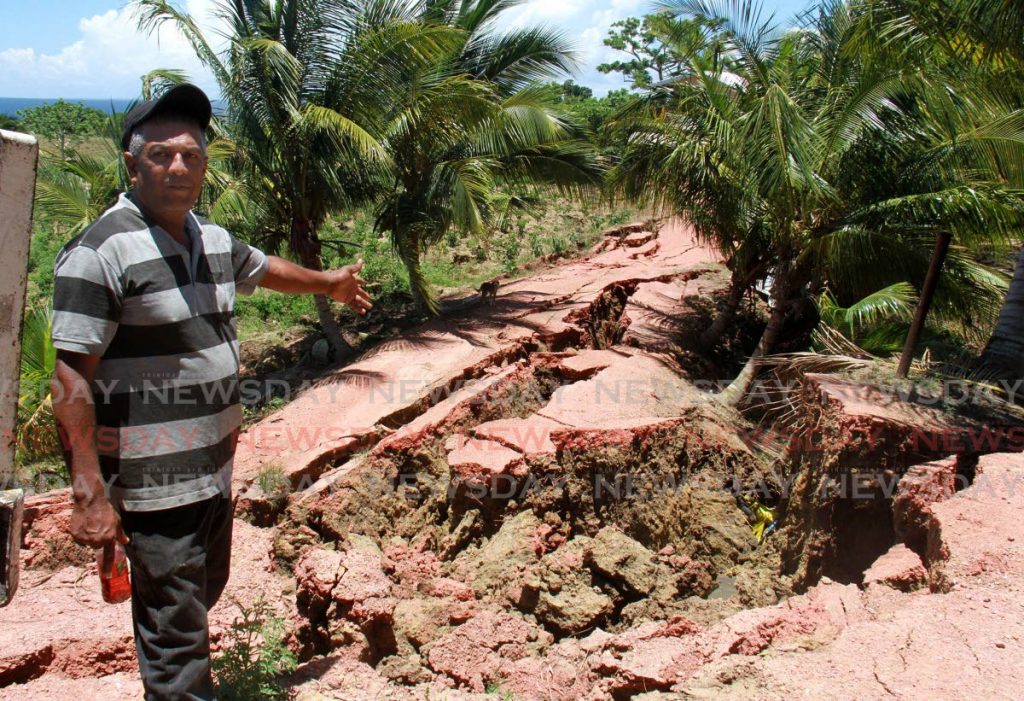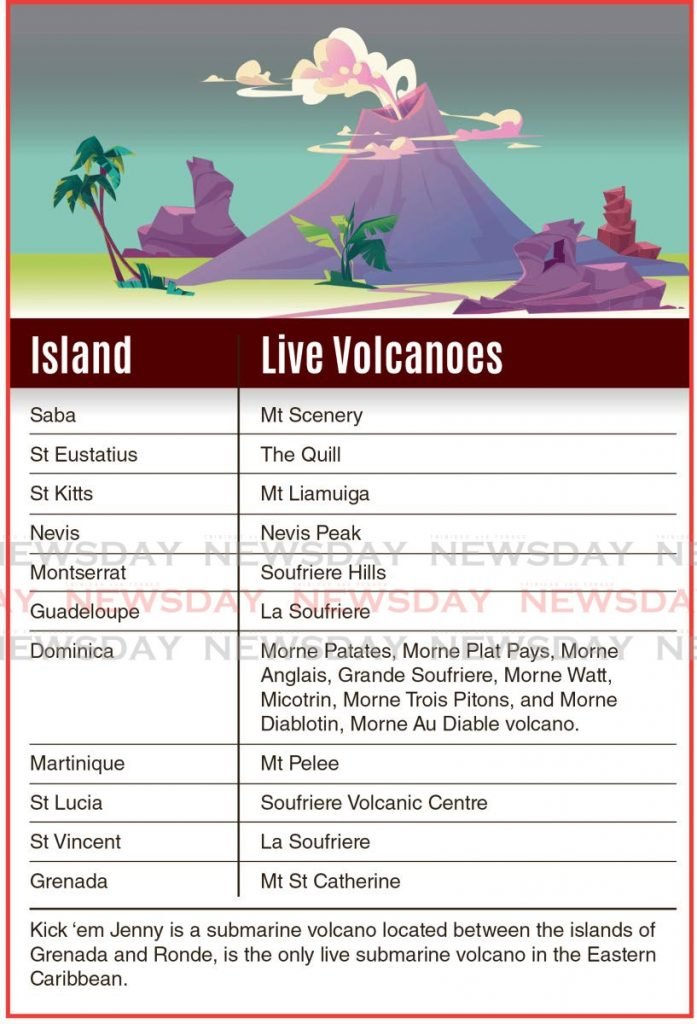Volcanoes, earthquakes part of life in the Caribbean

Volcanoes and earthquakes are realities of life in the Eastern Caribbean so people and countries should be prepared for them says seismologist Dr Joan Latchman.
According to the University of the West Indies Seismic Research Centre (UWI-SRC) website, Grenada, St Vincent, St Lucia, Martinique, Dominica, Guadeloupe, Montserrat, Nevis, St Kitts, St Eustatius and Saba have 19 live (likely to erupt again) volcanic centres.
“Other islands such as Anguilla, Antigua, Barbuda, Barbados, British Virgin Islands, most of the Grenadines and Trinidad and Tobago (which are not volcanic) are close to volcanic islands and are, therefore, subject to volcanic hazards such as severe ash fall and volcanically-generated tsunamis.”
Latchman said because of their histories, countries with volcanoes that have erupted in the historical era tend to have contingencies in place to mitigate loss of life when a volcano erupts as they treat the need to be prepared with more urgency than territories without a recent eruption. Although, she admitted, there will always be challenges with “real time” implementation of a crisis response.
The eruption of La Soufriere volcano in St Vincent is a recent example.
“St Vincent has had several projects for making their country more volcano ready, especially for those northern communities that are in the red zone. There was one project that was nearing completion with those communities to make them more volcano ready, and so they knew what they should have on hand and the systems in place for evacuation.”
However, she stressed that other countries should have plans in place as well.
“It’s not a matter of ‘now,’ when we see something happen. It is a matter of ‘always’ because this is our reality. We have these volcanoes, we have a volcanic hazard and an earthquake hazard in the region.”
She said people in TT accept earthquakes of magnitude three and four every few months as normal. Also normal is magnitude fives occurring three times a year, and sixes every three to five years. However the sevens occurring every 30 years, or the eights every 100 years are also a normal part of the earthquake pattern.
When the region shakes
“Currently, the Eastern Caribbean has not seen our largest magnitude earthquake for over 100 years. That is something that we should always have at the back of our minds when planning for our future development. Because that earthquake will occur, likely what we may consider ‘out of the blue,’ but which has been telling us it’s coming for decades.”

Volcanoes usually give notice as they become restless, but, in general, the notice from earthquakes in the region is more long-term and subtle. Therefore, it takes an analysis on the earthquake activity pattern to see in which areas larger magnitude earthquakes are due.
The last strong earthquakes near TT were on September 20, 1968 and August 31, 2018, magnitudes 7.0 and 6.9 respectively. Explosive La Soufriere eruptions in St Vincent and the Grenadines occurred in May 1718, April 1812, May 1902 and April 1979.
Recalling that the current eruption episode at La Soufriere began in December 2020, she said we should not conclude that there is a particular preference for eruptions around April.
“Why that is the case, we don’t have a firm answer, at this time. It is not possible to be definitive until there are far more data points showing that pattern.
According to UWI-SRC, other major eruptions in the region include Mt Pelee, Martinique in 1902 where there were over 30,000 deaths, the complete destruction of the city of St Pierre, and considerable damage to agriculture. It also began showing signs of increased activity at the end of 2020.
There was Soufriere in Guadeloupe in 1976 to 1977 with a minor phreatic eruption and no casualties, but an estimated economic cost of US$1 billion.
Then, there is the eruption in Soufriere Hills, Montserrat, which began in 1995 and continues today. There were about 20 deaths, the complete destruction of capital, Plymouth, and complete destruction of the economy.
What are the dangers
In addition to the loss of lives and property, and economic implications, there are also environmental concerns when it comes to volcanoes.
Pyroclastic flows, as currently seen in St Vincent, can knock down, bury, burn and generally destroy buildings and crops, and block rivers and streams which could cause flooding. However, it fertilises the land in the long-term.
Latchman explained when a pyroclastic flow enters the sea, the short-term effect is very localised with possible low-level tsunamis, and the heat causing the water to boil, killing fish and other sea life.

“For a one-off event the volume of sea water is so vast that it (the flow) would be diluted to levels that would not have a long term effect. It would have to be very large volume flows going into the sea over a prolonged period, I would think, to become a long-term concern.”
Ash and volcanic gases in the air is also a concern. The ash exacerbates breathing issues for people with respiratory problems and allergies, and long-term exposure could cause the lung disease silicosis.
Sulphur dioxide, carbon dioxide, and hydrogen sulfide are released into the air and, in high concentrations, close to the crater, they are deadly. However, as they rise into the atmosphere they are diluted and are less intense.
The hazard posed by volcanic gases should not be underestimated, for example, she said in August 1986, a large cloud of highly concentrated carbon dioxide gas was released at Lake Nyos, Cameroon, West Africa, blanketed surrounding villages, and killed about 1,700 people and 3,500 livestock.
“During our eruptions, the gases are dissipated and diluted as they move away from the volcano, but volcanic gases and products at erupting volcanoes, explosive obviously, but also effusive, should be treated with the greatest respect.”
----------------------
Table:
Island – Live Volcanoes
Saba – Mt Scenery
St Eustatius – The Quill
St Kitts – Mt Liamuiga
Nevis – Nevis Peak
Montserrat – Soufriere Hills
Guadeloupe – La Soufriere
Dominica – Morne Patates, Morne Plat Pays, Morne Anglais, Grande Soufriere, Morne Watt, Micotrin, Morne Trois Pitons, and Morne Diablotin, Morne Au Diable volcano.
Martinique – Mt Pelee
St Lucia – Soufriere Volcanic Centre
St Vincent – La Soufriere
Grenada – Mt St Catherine
Kick 'em Jenny is a submarine volcano located between the islands of Grenada and Ronde, is the only live submarine volcano in the Eastern Caribbean.

Comments
"Volcanoes, earthquakes part of life in the Caribbean"